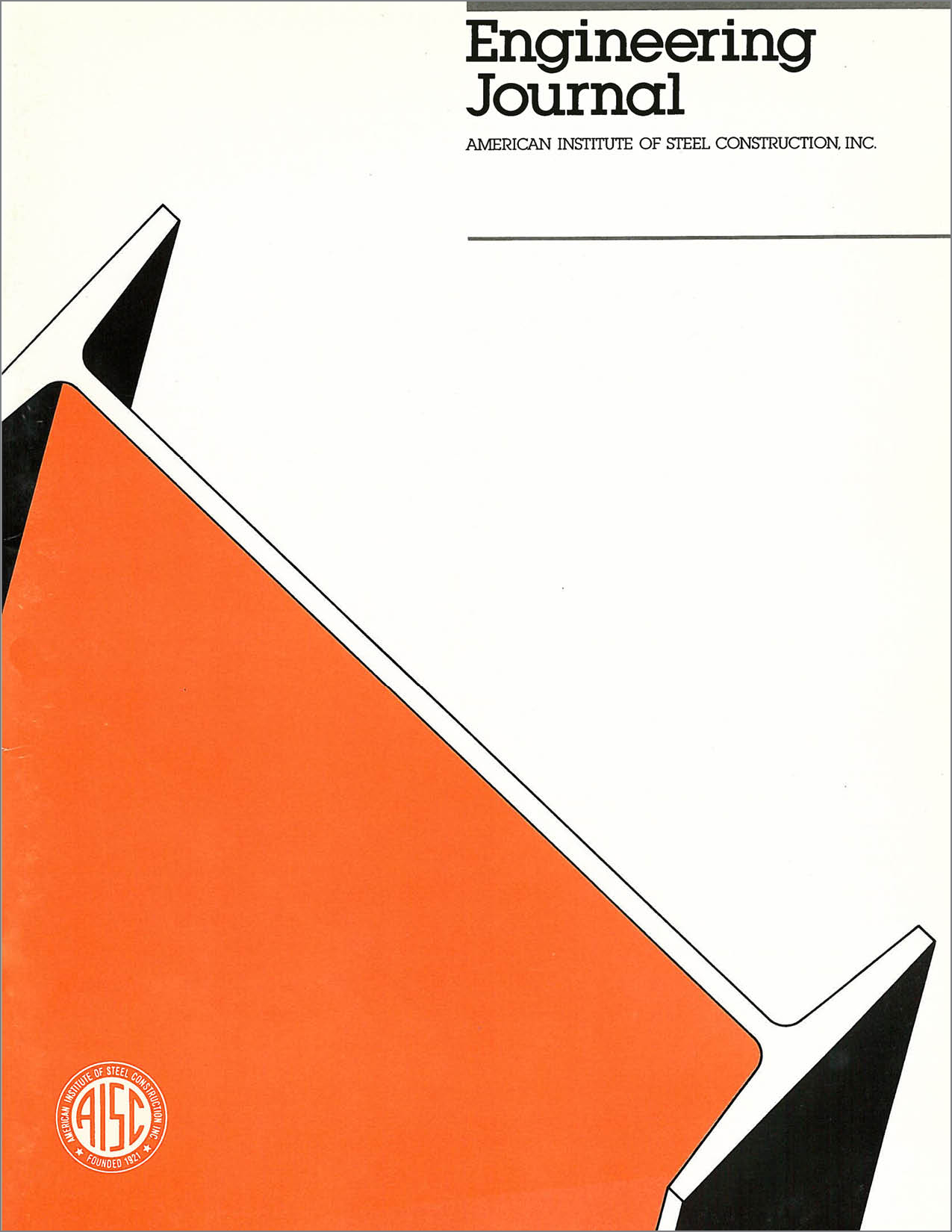Reinforcing Loaded Steel Compression Members
DOI:
https://doi.org/10.62913/engj.v25i4.506Abstract
Theoretically, it does not seem plausible that a column which is reinforced under load will have the same ultimate capacity as a column reinforced in its unloaded state. Yet there is a tendency to use the allowable stresses for the geometry of the reinforced column for both cases. This question is examined in greater detail in this paper, where the analysis shows that both the geometry of the reinforcement and initial load can affect column capacity. The paper develops a method to determine the capacity of a column reinforced under load based on AISC requirements. The analysis is applicable to any kind of column and reinforcement, but has not been verified by testing. This paper would confirm this, but shows this is not necessarily true for larger L/r values of the same reinforced column. If the effects of residual stresses from welding are ignored, the following examples illustrate how the location of the new reinforcement influences capacity. If a column is already carrying its full dead and live load, only the live load can be removed during reinforcement. The dead load stresses will be frozen in the column core after welding and can influence its capability to carry additional load. The original column, hereafter is referred to as the core. The effects of residual stresses from welding have not been considered in this paper and the reader should consult other publications on the subject.

